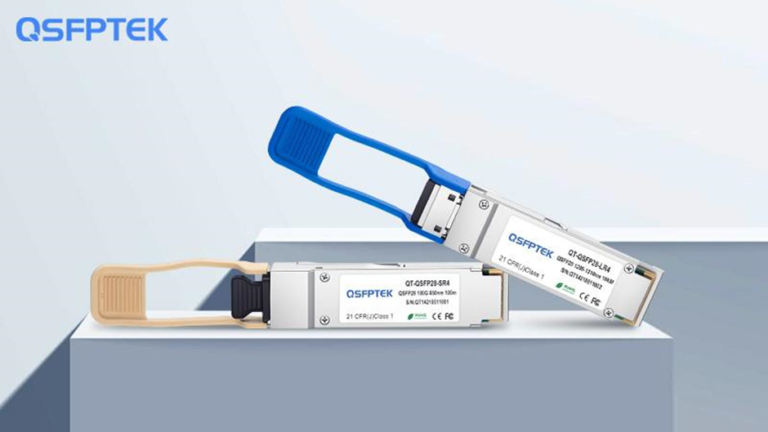As the world swiftly transitions to 5G, the demand for high-speed data transmission has surged, calling for robust and efficient network infrastructures. At the heart of this transformation are 100G modules, which play a crucial role in supporting the immense data throughput required by 5G networks. This article explores the application of 100G modules as backhaul links in 5G network architectures, examining how they enhance overall network performance and user experience.
The Role of 100G Modules in 5G Networks
5G networks promise to deliver unprecedented speeds, ultra-low latency, and massive connectivity, revolutionizing various sectors from healthcare to smart cities. To achieve these ambitious goals, the network infrastructure must be capable of handling vast amounts of data swiftly and efficiently. This is where 100G modules come into play.
Enhancing Data Throughput
The primary advantage of 100G modules in 5G networks is their ability to handle high data throughput. As the number of connected devices grows and data-intensive applications become commonplace, 100G modules ensure that data is transmitted quickly between different parts of the network. This is particularly crucial for backhaul links, which connect the core network to the distributed elements like base stations.
Reducing Latency
5G networks aim to achieve latency as low as 1 millisecond. High-speed data transmission facilitated by 100G modules helps significantly reduce latency. 100G modules help maintain the low-latency standards required for real-time applications such as autonomous vehicles and remote surgery by ensuring that data packets are swiftly and reliably transmitted across the network.
Scalability and Future-Proofing
As 5G technology evolves, the demand for higher data rates and more bandwidth will continue to increase. 100G modules provide the scalability needed to accommodate future growth. By investing in 100G infrastructure now, network operators can future-proof their networks, making it easier to upgrade to even higher speeds when necessary.
Applications of 100G Modules in 5G Networks
Backhaul Connectivity
Backhaul links are critical in 5G networks as they connect remote base stations to the core network. 100G transceivers serve as the backbone for these links, providing high-speed, high-capacity connections that are essential for maintaining the performance of the network. By using 100G modules, operators can ensure that data from numerous base stations is aggregated and transmitted efficiently, minimizing congestion and bottlenecks.
Fronthaul and Midhaul Connectivity
In addition to backhaul, 5G networks rely on front-haul and mid-haul connections. Fronthaul links connect the central unit (CU) with distributed units (DUs), while mid-haul links connect the DU to remote radio units (RRUs). 100G modules can be employed in these segments to enhance data transmission rates and reduce latency, thereby improving overall network performance and reliability.
Data Centers and Cloud Integration
5G networks rely heavily on data centers and cloud services for processing and storage. 100G modules facilitate the seamless integration of these elements by providing high-speed connections between data centers and the network core. This integration is crucial for supporting data-intensive applications like AI, IoT, and big data analytics.
Improving User Experience
The ultimate goal of 5G networks is to provide an enhanced user experience. By leveraging 100G modules, network operators can deliver on this promise in several ways:
Seamless Streaming and Gaming
High-speed data transmission ensures that users can enjoy uninterrupted streaming of high-definition content and immersive gaming experiences with minimal latency and buffering.
Reliable Connectivity
Reliability becomes paramount as 5G networks aim to connect billions of devices. 100G modules provide the robust infrastructure needed to support many connections without compromising on performance.
Enhanced Mobile Broadband
For mobile users, 100G modules enable ultra-fast download and upload speeds, making activities like video conferencing, online collaboration, and virtual reality more seamless and enjoyable.
Conclusion
In the rapidly evolving landscape of 5G, 100G modules stand out as the backbone of high-speed data transmission. Their ability to handle vast amounts of data, reduce latency, and provide scalable solutions makes them indispensable in modern 5G network architectures.
As operators continue to deploy and expand 5G networks, integrating 100G modules will be critical in ensuring that the high expectations for performance and user experience are met. By investing in this technology, network operators can meet current demands and prepare for the future, creating a resilient and high-performing network infrastructure.

